Epidot
Epidoot, Epidootti, Epidota, Epidotas, Epidote, Épidote, Epidoto, Епідот, 緑簾石, 紅綠寶石, אפידוט
Allgemein bekannt
seltener (sogenannte Sammlersteine)
ganz selten (Raritäten)
relativ seltenes organisches Material
|
Chemische Formel: Ca2(Fe3+,Al)3(SiO4)3(OH)
Mineralklasse: Silikate Kristallsystem: monoklin Mohs-Härte: 6 - 7 Dichte (g/cm3): 3,39 - 3,49 Refraktions-Index: 1,715 - 1,797 Spaltbarkeit: unterschiedlich Farben: gelblichgrün, schwarzgrün; goldbraun, rötlichbraun Glanz: Glasglanz - harzig Fluoreszenz: - Pleochroismus: stark: farblos - gelb - grün - braun Größter Epidot: 0,419 kg (Quelle: www.mineralien-basel.ch), 35 cm? Fundorte: Mexiko, USA, Mozambique, Sri Lanka, Norwegen, Österreich Erstbeschreibung: 1892 Name: vom griechischen Wort "epidosis" (zunehmen) |
|
Epidot Mineral
Größe: 2,8 x 2,5 x 1 cm Herkunft: Bellecombe / Aosta Tal / Italien Foto mit freundlicher Erlaubnis von © www.webmineralshop.com |
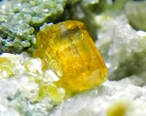 |
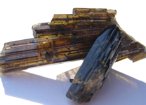 |
|
Epidot
Gewicht: 0,53 ct Herkunft: Pakistan Foto mit freundlicher Erlaubnis von © www.americanthai.com |
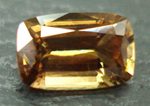 |
|
Epidot
Gewicht: 0,89 ct Größe: 0,69 x 0,55 cm Herkunft: Brasilien Foto mit freundlicher Erlaubnis von © www.gemfrance.com |
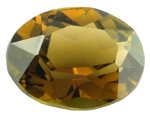 |
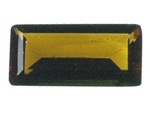 |
|
Epidot Mineral
Herkunft: Lago Fallin / Val di Viu / Piemont / Italien Foto mit freundlicher Erlaubnis von © www.irocks.com |
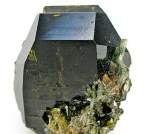 |
|
Epidot
Gewicht: 0,55 ct Herkunft: Pakistan Foto mit freundlicher Erlaubnis von © www.americanthai.com |
 |
|
Epidot
Gewicht: 3,07 ct Herkunft: Bahia / Brasilien Foto mit freundlicher Erlaubnis von © www.irocks.com |
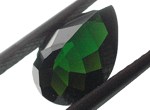 |
|
Chemische Formel Tawmawit:
Ca2(Al,Fe3+,Cr)3[O/OH/SiO4/Si2O7]
Mineralklasse: Silikate Kristallsystem: monoklin Mohs-Härte: 6 - 7 Dichte (g/cm3): 3,45 ? Refraktions-Index: 1,715 - 1,797 ? Farben: gelb, grün, dunkelgrün Fluoreszenz: - Pleochroismus: stark: grün - hellgelb Größter Tawmawit: ? Fundorte: Finnland, Italien, Myanmar, Österreich, Pakistan, USA, Zimbabwe Erstbeschreibung: 1907 (Bleeck) |
|
Tawmawit
Größe: 4,1 x 4,1 x 2,2 cm Gewicht: 0,30 ct Herkunft: Pakistan Foto mit freundlicher Erlaubnis von © www.djraregems.com |
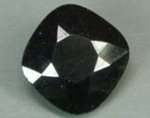 |
⇐ Intro Seite ⇐ Edelsteine